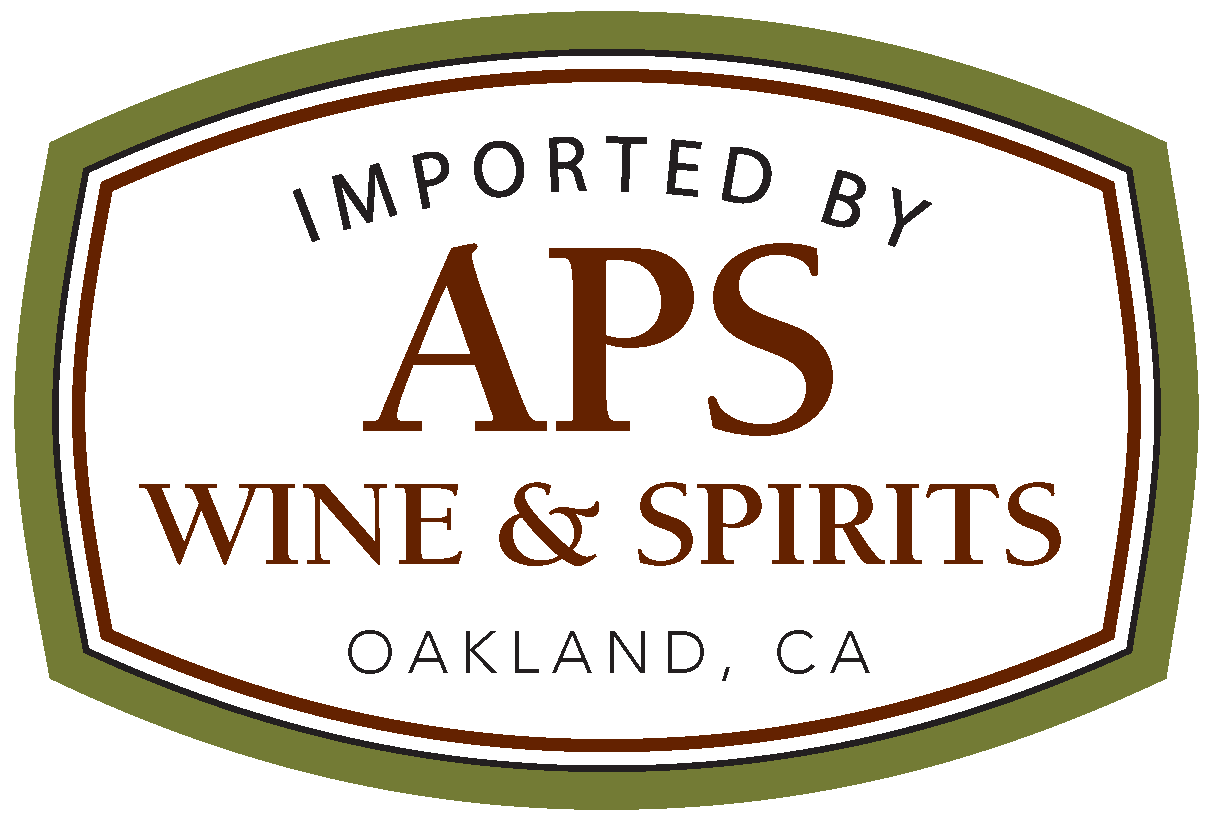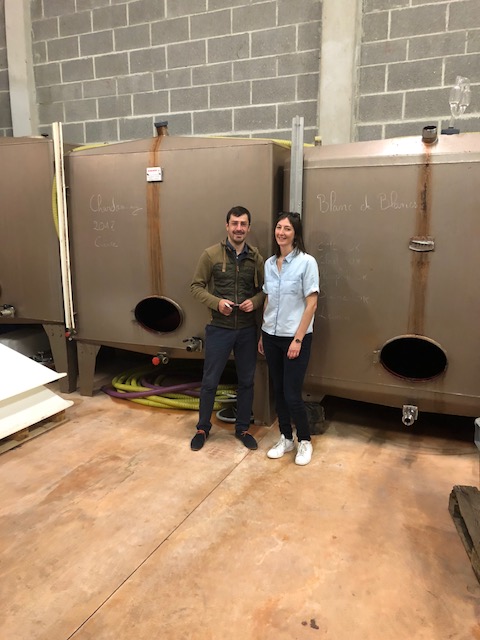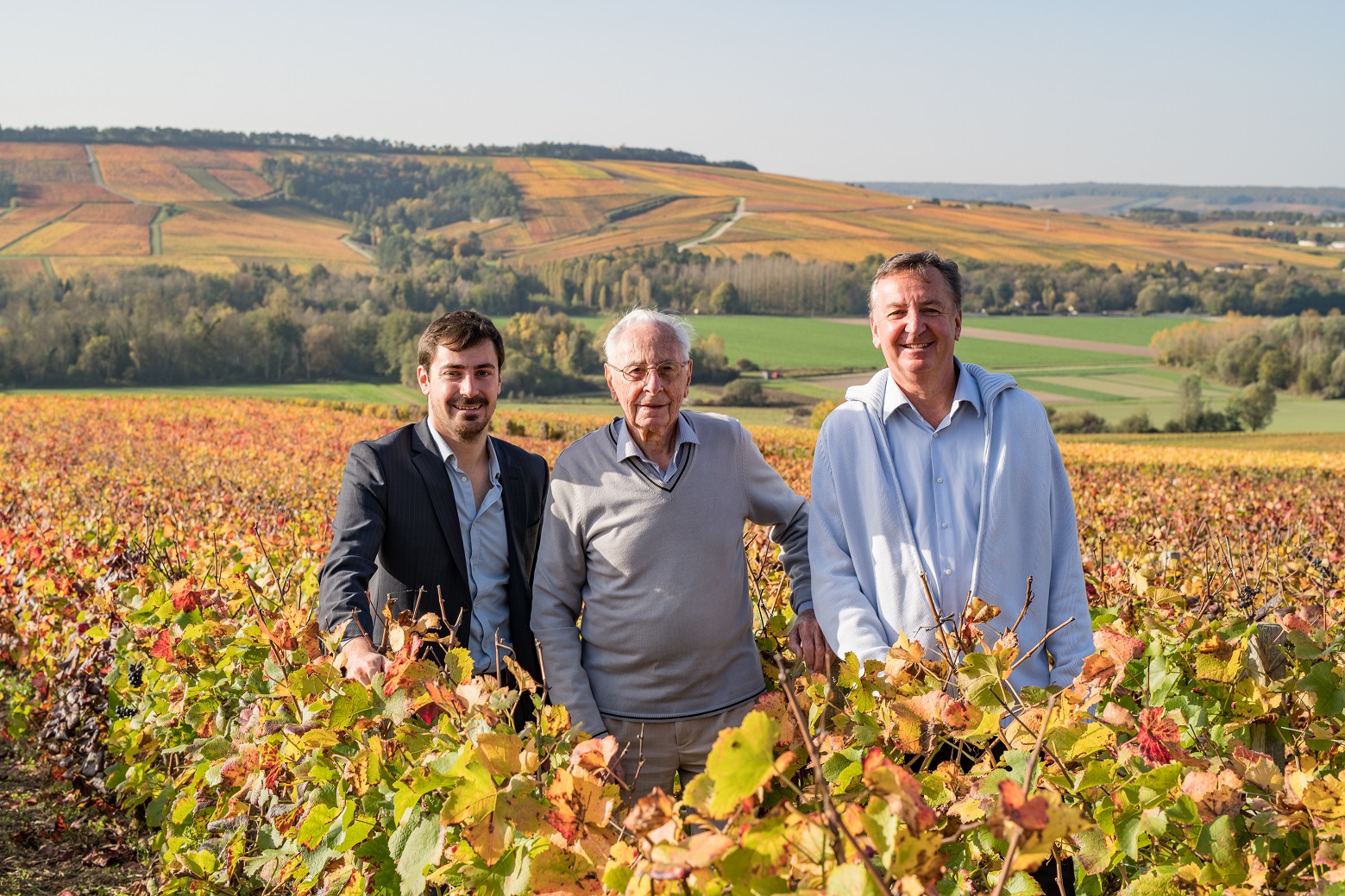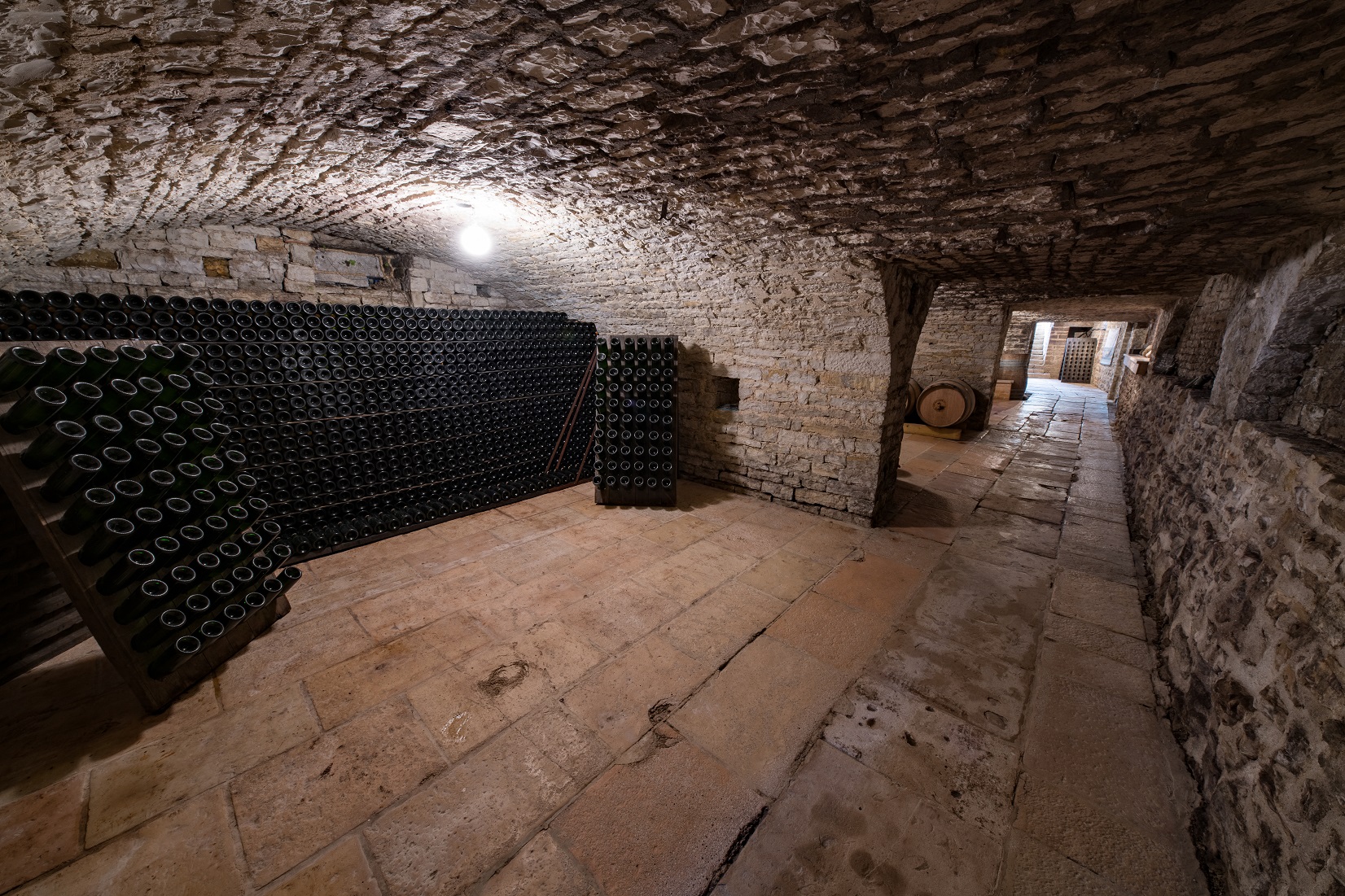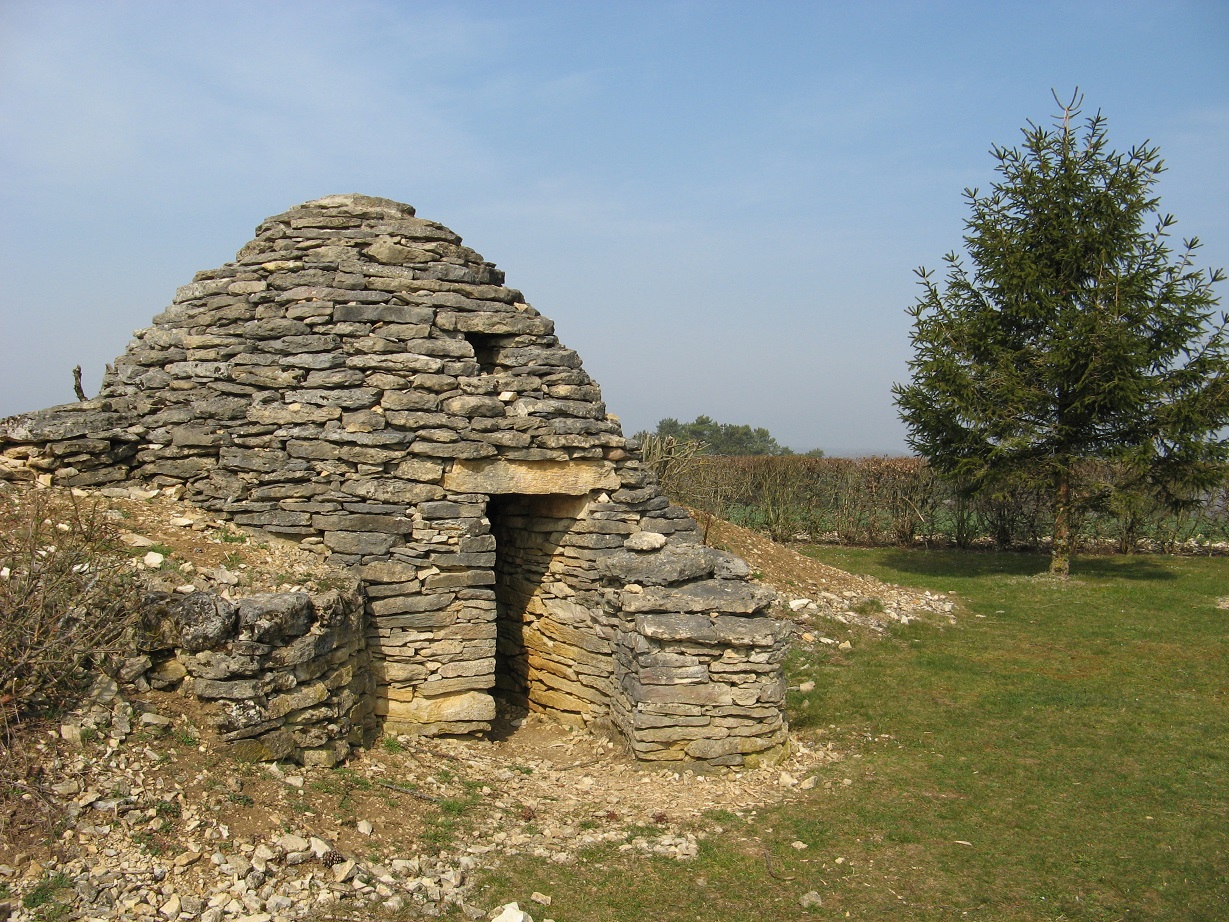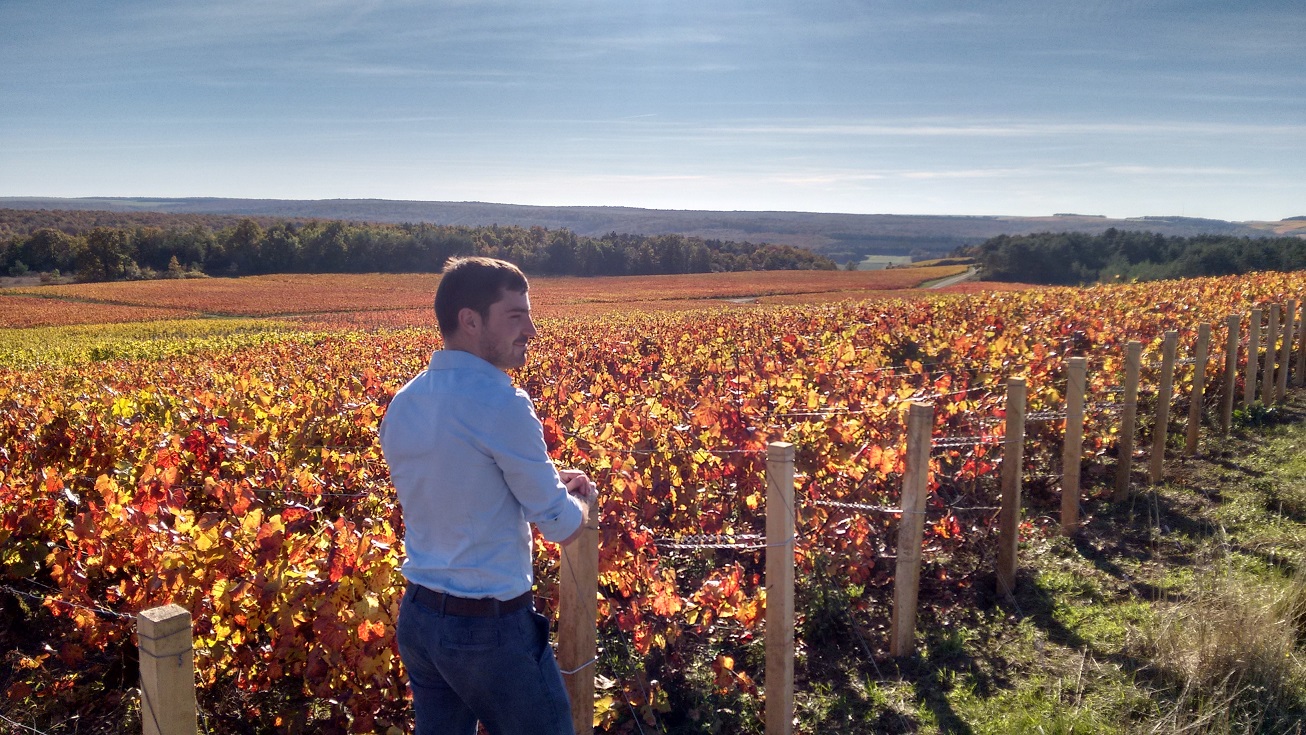“GET-UP AND AUBE”
In the midst of the French Revolution, the Tassin family settled in the village of Loches-sur-Ource, southeast of Troyes, the original Champagne capital. Before The New York Times and instagramming sommeliers, Tassin made Champagne, Aube style. With “dirt” under their nails, Thibault and Anne-Fleur look forward to the family’s 229th vintage, Revolution born and made.
In 1793, in the midst of the French Revolution, the Tassin family settled in the village of Loches-sur-Ource, southeast of Troyes, the original Champagne capital. With diplomas in enology from three institutions – Troyes, Beaune and Reims – Thibault Tassin or “TiBo” (as we call him) steps-up his family’s Champagne game. Working side-by-side with his sister, Anne-Fleur, TiBo challenges himself and asks, “How can we make the best expressions of our terroir, not just the Aube, but our terroir in Loches-sur-Ource?” With 228 vintages of practice, a new found opportunity for improvement.
In every bit of the Seine, there is a little bit of the Ource. The Ource flows along and eventually joins the Seine, and together they head to the great land of Troyes! (followed by a place that begins with a big “P”) So why so much talk about the little rinky-dink Ource? Because it’s special to Tassin. The Ource creates a gentle microclimate – a mild pocket where Pinot Noir and Chardonnay can breathe a little easier in the daggers of frost and hail.
Aube growers take pride in their “off the grid” southerly location in Champagne. The Tassin family is closer to Dijon and the gates of the Côte de Nuits than the legendary cellars of Reims. Due to their close proximity to Burgundy, many Aube children (born into Champagne families) enroll in enology studies in Beaune versus Reims. The influence of Burgundy winemaking is inexorable. Yet, TiBo is well-rounded in his perception (having studied in Champagne and Burgundy). Unlike those who have experimented with and developed kinships with oak, fractional blending systems, and single parcel bottlings, the Tassin family has sharpened their vision on better farming and has remained loyal to steel in the cellar. While others are deliberately making inconsistent wines, Tassin is a monologue of “back to basics.” The results are dependable, transparent Champagnes that you can buy, sell, drink, enjoy… and do it all over again.
Vrai ou faux, true or false, the real heartland of the Champagne region is the Aube? The answer is true! The communes surrounding the historic city of Troyes in the Aube grew Pinot Noir and Chardonnay for Champagne as long as any of the more famous towns further north in the Marne. The story that lead to the “ascendency” of the Marne is one of politics and intrigue, as you can well imagine. All we need to know is that the Aube is the real deal: think Aube, Chablis and Côte d’Or for Pinot Noir and Chardonnay without parallel, and you will understand why savvy consumers and sommeliers alike beat a path to this “rediscovered” corner of Champagne.
Now direct your eyes to the label on the next page which say, “Successeurs depuis 1793.” Simply put, that means the Tassins have passed their vineyards and Champagne-making skills from father to son for almost 230 years. The Constitution of the United States was ratified only five years earlier!!! Not only that, the French Revolution was raging when the Tassins took up viticulture in the tiny hamlet of Loches-sur Ource. Momentous times indeed.
Since 1929, Tassin has been recoltant-manipulant (grower Champagne), so Thibault and Anne-Fleur, who now run all aspects of the domaine, grew up learning Champagne from the roots in the ground to the bubbles in the glass. Thibault, a graduate of enology school in Champagne, as well as Burgundy, has a well-rounded perception of modern-day winemaking, but is not tempted by relationships with oak or multiple-parcel bottlings. Rather his focus is the vineyard, aiming to harvest fruit of the highest quality. His cellar philosophy is simple: no oak, all Aube. One last word on Thibault’s attitude towards traditional vs. modern wine making: he prefers to use technology to understand his wines, rather than manipulate them. He deploys technology to make micro-scale, artisanal and authentic Champagnes, wines that his ancestors would recognize as true to the Aube and the Tassin name, but with much less of the perils of weather and biology that dominated the hit-and-miss quality of 100 and even 50 years ago. We say, Thibault has the right idea. Come and find out how right his Champagnes are.
Champagne Brut NV
Just as in Burgundy, marl soils are ideal for Pinot Noir and chalky soils are ideal for Chardonnay. Tassin’s base wines are fermented in stainless steel from beginning to end, then followed by natural malolactic fermentation. Thibault allows the base wines to settle twice in vat in his deep, cold and hand-cut stone cellar for a pristine and natural clarification of the wine. After the secondary fermentation, the wines are aged and gently riddled. Thibault’s Brut is always a three-vintage cuveé with one vintage serving as the foundation, and the other two accenting it. Thirty months of aging on the lees gives it true depth. The blend is 80% Pinot Noir and 20% Chardonnay and all Aube sourced from Tassin’s prime vineyards in the communes of Celles-sur-Ource and Landreville. The Pinot Noir is center stage with a host of juicy red-fruit flavors and pale floral tones, while the Chardonnay does all the things it should do: gentle lift, delicate clean lines, and tidy finish.
We thought our clients could get a deeper insight into what makes Tassin “tick” by hearing from Anne-Fleur and Thibault themselves, so we asked them to give us their thoughts about their Brut and Blanc de Blanc Cuvées:
“Growing up in a Champagne family, we have tasted many, many wines both from the Aube and the Marne, and one thing shines through all the best of them: the art and skill of blending. It is taken for granted that the blender must begin with fruit from excellent vineyards, but vintage, variety and style frame their ultimate expression. Thibault blends the Champagnes of Tassin and his “touch” really comes through in the glass. With our Brut Cuvée he used predominantly Pinot Noir from 2019, with contributions from 2018 and 2017 (an excellent vintage in the Côte des Bar, small, but no botrytis like the Marne), along with a refreshing percentage of Chardonnay to temper the power of the Pinot Noir. Tasting his blend for our Brut Cuvée, we consider it to be a most authentic wine, expressing our desired balance of generous fruit and delicate finesse. We are very proud to offer Thibault’s Brut as the essential Cuvée of our estate.”
Vrai ou faux, true or false, the real heartland of the Champagne region is the Aube? The answer is true! The communes surrounding the historic city of Troyes in the Aube grew Pinot Noir and Chardonnay for Champagne as long as any of the more famous towns further north in the Marne. The story that lead to the “ascendency” of the Marne is one of politics and intrigue, as you can well imagine. All we need to know is that the Aube is the real deal: think Aube, Chablis and Côte d’Or for Pinot Noir and Chardonnay without parallel, and you will understand why savvy consumers and sommeliers alike beat a path to this “rediscovered” corner of Champagne.
Now direct your eyes to the label on the next page which say, “Successeurs depuis 1793.” Simply put, that means the Tassins have passed their vineyards and Champagne-making skills from father to son for almost 230 years. The Constitution of the United States was ratified only five years earlier!!! Not only that, the French Revolution was raging when the Tassins took up viticulture in the tiny hamlet of Loches-sur Ource. Momentous times indeed.
Since 1929, Tassin has been recoltant-manipulant (grower Champagne), so Thibault and Anne-Fleur, who now run all aspects of the domaine, grew up learning Champagne from the roots in the ground to the bubbles in the glass. Thibault, a graduate of enology school in Champagne, as well as Burgundy, has a well-rounded perception of modern-day winemaking, but is not tempted by relationships with oak or multiple-parcel bottlings. Rather his focus is the vineyard, aiming to harvest fruit of the highest quality. His cellar philosophy is simple: no oak, all Aube. One last word on Thibault’s attitude towards traditional vs. modern wine making: he prefers to use technology to understand his wines, rather than manipulate them. He deploys technology to make micro-scale, artisanal and authentic Champagnes, wines that his ancestors would recognize as true to the Aube and the Tassin name, but with much less of the perils of weather and biology that dominated the hit-and-miss quality of 100 and even 50 years ago. We say, Thibault has the right idea. Come and find out how right his Champagnes are.
Champagne Brut Blanc de Blancs NV
Pure Chardonnay from Tassin’s oldest vines (average age about 50 years-old) planted on the Kimmeridgian hillsides of the commune of Essoyes. The word Kimmeridge should ring a bell for Chardonnay lovers, as it’s the same chalky soil that imparts the initimable beguiling flavors to the finest wines of Chablis. In a region where Pinot Noir triumphs, Aube Chardonnay is a protected rarity. Rare though it is, the vine has a documented 400-year history in Essoyes; it produces sublime fruit without fail.
Thibault’s winemaking starts with an extended “decantation of the musts” to produce the purest and most aromatically expressive juice possible. From there, he vinifies in steel tank moving through alcoholic and malolactic fermentation and then bottling to age for a total of 30 months on the lees before late disgorgement. The Tassin Blanc de Blancs style is about mouthfeel and polarity in textures and impressions: intense yet soft, rich yet light. There’s the nutty green apple, the yeasty sourdough bread, and the refreshment of lemon on the end. 320 cases for the U.S.
We thought our clients could get a deeper insight into what makes Tassin “tick” by hearing from Anne-Fleur and Thibault themselves, so we asked them to give us their thoughts about their Brut and Blanc de Blanc Cuvées:
“Thibault’s Blanc de Blancs Cuvée is pure Chardonnay from the little commune of Essoyes, less than five kilometers from our cellar in Loches. As with his Brut Cuvée, it is mostly a blend of 2019, with elements of 2018 and 2017, and aged more than 30 months on the lees. Thibault is very fond of his Essoyes Chardonnay and he treats the vines with special care, pruning in the most conservative Chablis method to encourage slow and balanced development of the fruit. It is a time-consuming method, and can restrict the overall yield of fruit, but the result is well worth it. The Blanc de Blancs is delicate with a fine minerality, brilliant acidity and dash of salinity. Pretty flower aromas fill the glass, while a fine bead of bubbles tickles your nose. Fresh and round, it is lovely as an aperitif or as an accompaniment to a variety of fish dishes or with many kinds of young cheese.”
